今日の日本語の言葉: kioku (記憶) - remembrance/memory
This word is brought to you by what I did that day, which was a lot of paying respects, learning, and, most of all, carrying on the memory of the bombing
This day was pretty tough on me. I've never really thought much about the Nagasaki bombing so far, just because I've never had an opportunity or need to really think about it; whenever we went through it in history class, we passed through it in a day or so, and it was from the American perspective. We never looked at pictures of the dead people, or heard about what happened on land. It was just the standard "remorse statement" of something like, "America has learned its mistake, and from that point on..." and then we just moved on to the next subject. It was passing, so I never paid it attention. But yesterday, when I went to the museum, I had to pay attention, and it hit me pretty strongly. Thus, I warn you that this post today isn't light reading, and I don't know how much I can say about it. It's more like I'll let whatever I took pictures of speak for itself, since none of my words can do it justice. It was horrible. So horrible.
Well, for breakfast, I had some nice fish, rice, salad, and sausage. It was delicious, and a very nice way to start off what was going to be a pretty tiring day, physically and emotionally. We had to pack and leave by 9:30 to try to make it to all of our things on time, and we didn't want to cut short anything, since today was an important day, and we wanted to have all the time we wanted at the museum and peace park.
 |
| One more picture of that cool lantern and the shapes it casts |
 |
| Like an older version of the Boston green line; reminds me of home so much! |
We took the train from our hotel to the Nagasaki Atomic Bomb museum. We walked up a nice hill to find the museum situated right at the top. What surprised me when I first stepped foot in there was how many cranes there were. Apparently, you're allowed to bring your own set of a thousand paper cranes there to donate to the collection if you want, and that's what schools tend to do when they visit. It's actually really cool, and it's nice to see that people are still doing something caring, even if the current school generation doesn't quite understand like those lived through it did (like I know I won't ever get it like those who survived it will).
 |
| Partly made out of gold. Isn't that cool? |
When we went into the first room of the exhibit, it scared me so much. It was unnerving, and they designed that room very well. There was wreckage all around you, and the room was really dark. There were some very eerie string pieces playing softly, in that quiet violin way. Occasionally, light from the bottom of various things would light up, like the picture below, and then it would slowly fade away with a decrescendo in music. I wish I could explain better to you the effect of the place. But I was already tearing up, and I wasn't even through the first room, and I hadn't even had enough time to think about it. But the music, and the lighting, and the messages on the wall and the pictures—they all worked together to really create something magically tragic.
The lighting on this replica of a church—of which the gate was the only thing left standing after the bomb—was especially startling. My camera does it no justice, but imagine that this is all you see in a room of darkness, with the music at a crescendo as the lights reach their brightest. This wall is really tall, too, and you have to crane your neck to look up. It's a moment of awe, but also of great devastation. And it's one of those moments where you just would stand still, because you couldn't move. It took all of your attention.
I finally moved past to the next room, where it was a bit more about artifacts and what the effects of the bomb were. There were pictures of the victims, pictures of the aftereffects, artifacts of things melted together, burned to a crisp, broken in half, etc. And there was this very cool and informative 3-D model of what happened step by step as the bomb dropped, then afterward.
 |
| Regular |
 |
| Bomb blast heat waves |
 |
| Radiation begins to spread |
The blast happened so fast that things were literally burned to a crisp on the spot. Thus, when you look at buildings and walls that were still standing, sometimes you can see shadows of people and ladders and stuff that were standing right in front of it. The blast passed through so quickly that it burned anything but what those objects were covering. Thus, you get this eerie silhouette that's left behind.
The rest of the room consisted of exhibits like some truly disturbing photographs of the damage to the people. There were torn clothes, twisted metal melted together, etc—all artifacts that can only begin to hint at just how terrifying and fast the whole thing was. It was an instant from every day life to fires everywhere and many people dead. Can you even begin to imagine if that ever happened in Boston or something?
 |
| Can you see the glass embedded in this staircase from the force of the blast? |
 |
| A bunch of cider bottles melted together |
 |
| This is a spool of wire. It's so melted together it looks like wood, doesn't it? |
 |
| What a trivial decal on that plane... god... |
The next room had stories from people who actually survived it, and it was just as hard to walk through as the room at the beginning. I read every single one of them, and the two pictured below are the particularly heartbreaking ones which I implore you to read. You really don't get things from this perspective when you learn about it in American history classes—probably for the same reason you probably don't go into much detail about the horrors of the Holocaust when teaching German history (so I've heard from my Germany-living friends). There's a great amount of shame still lingering; it wasn't that long ago, after all, in the grand scheme of things.
 |
| Look at how many nuclear tests happened since 1955 after the bomb... |
From the atomic bomb museum, we made our way to the Hall of Remembrance, which is there to honor the dead of the bombing. It's a whole path from room to room meant to focus on one part or another of a legacy after the bombing. The first room had pictures and names of all those that died, in a video that changed pictures very quickly. Yet, despite the speed, it'd take more than two hours to get through the pictures of all those that died—and that's not even getting to those that were injured yet either, or those that were affected later by the radiation.
The main Hall of Remembrance was actually so grand. It's very tall and very quiet. I tried to tip-toe around, because every sound reverberated within the hall, and we were the only ones there. Every sound you made seemed to disturb its sacredness. There were schools on a field trip to the museum, but I could never imagine them coming in here. In fact, even with our small group of three, we went in generally one at a time. It was a place you needed to be by yourself to really fully experience. Just you, the tall pillars, and the constantly updated names of the dead in the back. It's way too personal a place for school groups to come through (they were already getting on my nerves enough laughing and playing tag in the museum—these are high school students; the students of Hiroshima are supposedly (from what Shannon's told me) much more well behaved).
When we left the hall of remembrance, we went to the information room where there was a wall of people who wrote stuff about peace and the Nagasaki bombing. I ended up leaving my mark too, though I wanted it to be more colorful (everyone else tended to pick up one color—usually black—and write something, then hang it up). I drew something quickly with what I had on hand, wrote about what struck me as most important—the children left behind—and then hung it up.
We then exited to a little waterfall area which lit up at night with approximately one light for every person who died in the bombing. I was sad that we couldn't be there at night, but it couldn't be helped that we had to leave to get back to Tokyo. From there, we made our way to the peace park (Heiwa Kouen) which was a nice walk through the hypocenter of the bomb (which I'm glad they made so nice looking, to offset the horror of what it actually is).
 |
| That is the statue that marks the hypocenter of the bomb |
 |
| In the museum, there was an exhibit where someone referenced this as "the rings of death" |
From the hypocenter, we made our way to the peace park. On the way, we passed by the sole remaining pillar of the church that was replicated inside the museum in that first room (the one I said took all your attention and was really tall and eerie and awful (in all senses of the word)). It's very cool that all of these things are so close to each other, you know?
At the peace park, we went around to see all the different statues, but our main goal was to see the famous Peace Statue sculpted by Seibou Kitamura, who was a Nagasaki native. It's a very commanding statue, and it definitely holds the center of attention easily in the park, with all roads pointing toward it.
After the peace park, we didn't plan to do anything else heavy or serious for the rest of the day. We were just going to go eat, possibly visit a quick place or two, then go back to the hotel and leave for the airport. I was thankful for that, since I didn't think that emotionally I could handle much else. That museum puts you through the ringer, and you come out of it appreciating that it did so. One can only hope to ever experience a sliver of what it actually felt like to be there and live through it.
We had lunch in a food court, and I had some nice katsu as always. Ian and I vary drastically in our food tastes, so it's often very difficult to find food that the both of us like to eat. Japanese food doesn't fill him up, so he prefers to eat Italian food or Indian food and stuff, whereas Japanese food and east Asian cuisine in general is my favorite, and I'd never tire of it. But I just don't get why I'd go to Japan then eat pizza or pasta, you know? It seems like a bit of a waste. I'd go to Italy for that. So we eventually settled on a place that had some bibimbap, which Ian actually ate two bowls of while we watched in awe. The waitress had never seen someone eat two bowls before, and was very surprised. I also had some apple pie, because I was curious as to how the Japanese did it. My answer was that it was cold, and the crust was more like bread—chewy, and not crumbly. It's different, but that doesn't mean that it was bad. I still enjoyed it (though it also vaguely tasted of peaches, which, again, is different, but not bad).
Afterward, Ian also wanted to get ice cream (can you believe his stomach?), and so we dropped down to Baskin Robbins of all places to get some. I got some NY Cheesecake ice cream (which, for the record, doesn't taste like cheesecake at all)—and yeah, I know, two deserts in a row. But guess what? YOLO. I had to say it.
 |
| You get a cup and a lid for your candy... Wow. |
 |
| Look at the cool ice cream flavors! American Baskin Robbins isn't this cool, right? |
Before we left, we decided to stop by one last place (out of my request more than anyone else's), and that was to megane bashi (which means "glasses bridge"). It's called megane bashi because of the fact that the bridge has a column in the middle which makes it look like it's a pair of glasses and a nose. I think it's cute.
 |
| Ian wasn't so into the bridge, but he did find a nice friend. |
 |
| This house was smack in the middle of two apartment buildings. So cool, isn't it? |
We then headed back to the hotel and made our way back to the airport to go back home. I was exhausted by then, and I was so ready to hit a warm and comfortable bed and fall asleep. It was sad to leave Nagasaki, but I'm sure I'll be back someday. There's still so much that I haven't done there, after all.
I found this model of a plane's pilot's cabin and I sat in it for a while pretending I was the captain. Of course, it was only later that I realized that the captain sits on the left, and the co-pilot sits on the right. This is why I don't fly planes.
We got to the airport really early, so we actually went up to the observation deck to watch the planes plane. The sky was a beautiful hue, and the temperature was just perfect. It was a good parting sight for Nagasaki.
 |
| Such a Dutch/Portuguese design style for the Nagasaki airport |
 |
| Strawberry and taro Kit Kats! |
After the two hour flight, we landed, and it was one of the rare times I got to see the landing on the monitor. I love it when planes do that, and I wonder why they don't do it more often. The lights are just so cool to see as you approach. It's usually only something that pilots get to see, and I feel so privileged when I get to see it too.
I finally got back home at 10:30 or so, and I was so tired that there was no way I was going to write that blog post yesterday. Sorry, everyone. I was still tired when I woke up, and then I talked to Anna and got way to excited about talking to her to write about anything either. So finally, here's my post for yesterday. I got a new backpack at Nagasaki airport, actually, which is like this little case thing which unfolds into a cute backpack. I like the color coordination very much. :3
Anyways, I'll see you in about half an hour once again. xD
マギー
P.S. Did you know that all Tokyo elementary school teachers have to be able to play a certain skill level of piano? People think that's why there are more female teachers than male teachers in the Tokyo system. I think it's just cool that that's part of the teacher's license exam. :3
P.P.S. As I passed through the security at Nagasaki, I felt so relaxed. It's so chill, especially when compared to American security. My water bottle was still full, and all they did was open it and barely take a whiff. They totally didn't care about my scissors either, which America would have definitely confiscated. They took a look at Shannon's bottle and didn't even checked it. They just asked her if it was open, and handed it to her when she said it wasn't. I'm too young to remember America when it was like this. o.o
P.P.P.S. Recently Okinawa has established a curfew for all American military men, just because they're so rowdy and they caused so much trouble. Some woman got raped recently, actually, and thus, the curfew was set (I think this might be as recent as a week ago or something). And, of course, a few days after the curfew was set, some American soldier got smashed and broke into somebody's house. Of course, America. You represent yourself so well.
 |
| ANA gives you suitcases and stuff to carry things in if you don't have the capacity to carry it yourself (you've got to pay for it though, but I still think it's a pretty cool service) |
As for the exciting Anna news, you'll find out in the next post! ... Which I'm actually going to write right now after I post this one. That feels a bit weird to have to go through morning to night for another post so soon once again. ._.
Anyways, I'll see you in about half an hour once again. xD
マギー
P.S. Did you know that all Tokyo elementary school teachers have to be able to play a certain skill level of piano? People think that's why there are more female teachers than male teachers in the Tokyo system. I think it's just cool that that's part of the teacher's license exam. :3
P.P.S. As I passed through the security at Nagasaki, I felt so relaxed. It's so chill, especially when compared to American security. My water bottle was still full, and all they did was open it and barely take a whiff. They totally didn't care about my scissors either, which America would have definitely confiscated. They took a look at Shannon's bottle and didn't even checked it. They just asked her if it was open, and handed it to her when she said it wasn't. I'm too young to remember America when it was like this. o.o
P.P.P.S. Recently Okinawa has established a curfew for all American military men, just because they're so rowdy and they caused so much trouble. Some woman got raped recently, actually, and thus, the curfew was set (I think this might be as recent as a week ago or something). And, of course, a few days after the curfew was set, some American soldier got smashed and broke into somebody's house. Of course, America. You represent yourself so well.
























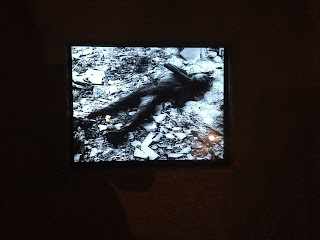











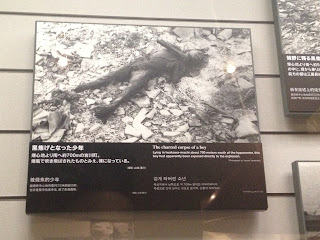











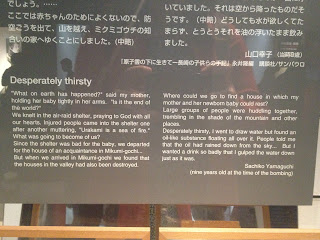










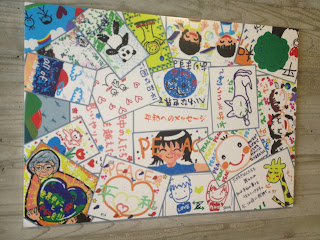















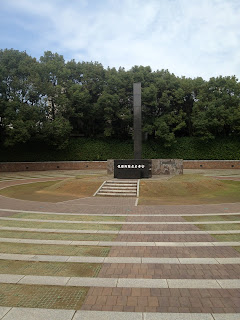


















































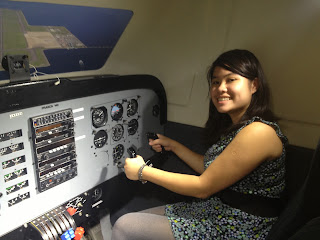















I am so glad you went to Nagasaki, Maggie. We cannot forget the lessons of history. Now you understand why Iran's nuclear shenanigans are so scary...
ReplyDeleteYeah. I was just thinking about that. That's probably the reason Bush could go in there with little opposition at the time, which is something that I didn't quite understand until now. It's some very scary and very real stuff.
DeleteNoooooooo...you've discovered Kit Kat Japan style.
ReplyDeleteGlasses bridge is pretty cool.